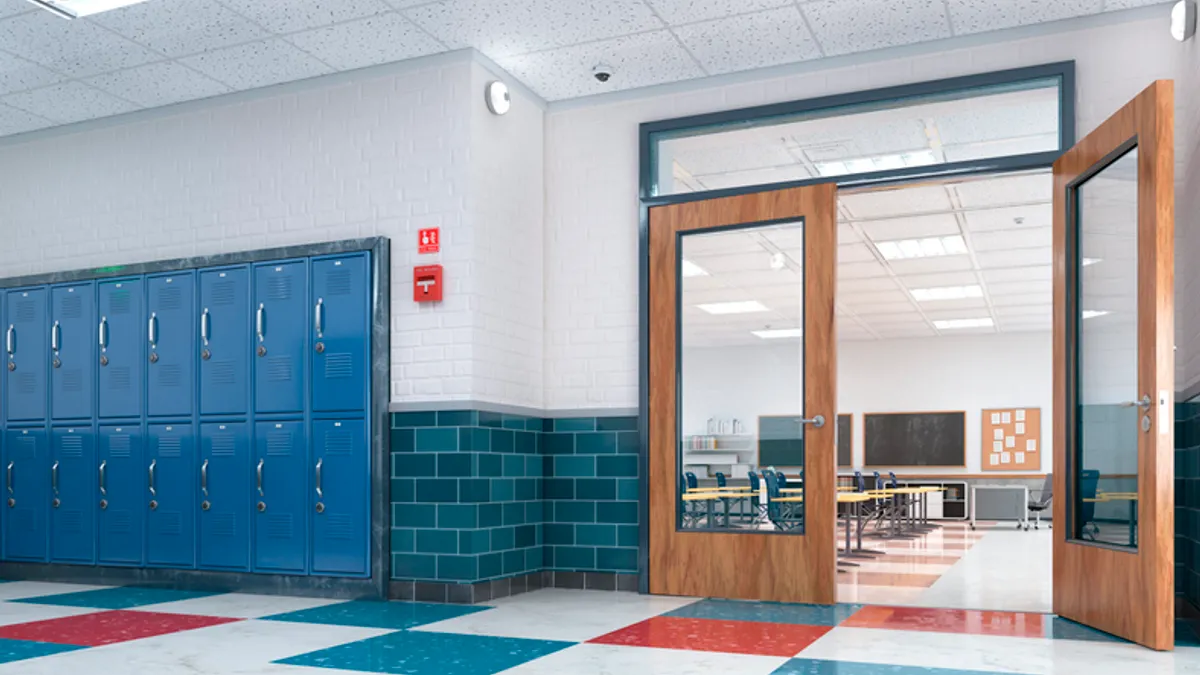As environmental regulations for commercial buildings and properties tighten across the U.S., green leases and technologies offer owners and operators opportunities to reduce their portfolios’ carbon footprints, generate cost savings and further align with ESG goals. Challenges with monitoring and managing scope 3 emissions, however, continue to pose threats to sustainability-related goals, as the impacts of climate change pose significant risks to real estate portfolios, according to a new report from Cushman & Wakefield.
Against the backdrop of growing regulatory pressures and related building decarbonization efforts, Cushman & Wakefield’s 2024 sustainability megatrends report identifies seven trends driving the ESG integration for businesses across sectors. Here are six of those trends that building owners and operators will find helpful to watch closely.
Mandatory ESG reporting
Jurisdictions are increasingly requiring some form of ESG benchmarking and disclosure for commercial real estate properties, intensifying the need for building owners and property teams to take accountability of their portfolios’ carbon footprints and environmental impacts, Cushman & Wakefield says.
Currently, 49 cities and six states in the U.S. have mandated some form of ESG benchmarking and disclosure for commercial real estate properties, the report says. At the federal level, the U.S. Securities and Exchange Commission’s final climate disclosure rules would require public companies to disclose their climate-related risks and include relevant greenhouse gas emissions information in their annual reports, pending an ongoing legal review, Cushman & Wakefield says.
Building performance standards
About 13 U.S. cities have building performance standards in place, representing about a quarter of all U.S. buildings, as of early 2024, with over 30 additional U.S. cities committing to passing BPS by 2026 or earlier, according to a recent report from JLL. And at least four states, including Oregon, Maryland, Washington and Colorado have passed laws for implementing BPS, according to the Institute for Market Transformation, which manages the National BPS Coalition.
A company’s portfolio that is not yet impacted by the rapid increase in the prevalence of building performance standards at local, state and federal levels, likely will be soon, Cushman & Wakefield says.
Identifying and implementing no- and low-cost energy conservation measures like adjustments to existing programs, equipment scheduling, off-hour operational reviews and additional capital measures are some of the steps that can help property owners and managers meet, or even exceed, building energy performance standards, or BEPS, the report says. For example, a 273,000-square-foot office building subject to Washington, D.C’s BEPS cut energy consumption 29% from the 2019 baseline after adopting these measures in consultation with Cushman & Wakefield’s energy and sustainability services team, according to the report.
Green leasing practices
The report points to a growing momentum of energy consumption and utility cost reduction measures through green leasing practices that align the interests of tenants and landlords with sustainability initiatives like energy efficiency and water conservation.
An analysis of energy efficiency measures facilitated by the signing of green leases, published by IMT in 2015, found that executing green leases can cut U.S. office buildings’ energy consumption by 11% to 22% and reduce utility costs of up to $0.51 per square foot. That means the leased U.S. office market alone could garner between approximately $1.7 billion and $3.3 billion in annual cost savings if every leased office building executed green leases, according to a paper by Green Lease Leaders, launched by IMT and the U.S. Department of Energy’s Better Buildings Alliance.
Earlier this year as part of the GLL program, the DOE and IMT announced 65 awardees, covering 2.9 billion square feet, in recognition of landlords and tenants who have modernized their leases to drive collaboration on energy efficiency, decarbonization, cost savings and other environmental and social issues. The number of platinum-level winners, the highest tier of recognition for the program, increased over 100% by last year, reflecting industry recognition of green leasing benefits, Cushman & Wakefield says.
Slashing emissions
Scope 3 emissions — indirect emissions in a company’s value chain not including purchased or acquired energy — continue to pose a challenge, however, accounting for up to 90% of a company’s emissions, according to the Carbon Disclosure Project. Commercial real estate companies and stakeholders are thus exploring strategies to target the sources of their scope 3 emissions, Cushman & Wakefield’s report says, pointing to thousands of companies reporting their scope 3 emissions to frameworks like CDP or those participating in the Science-Based Targets Initiative, which sets emission reduction targets in line with the Paris agreement goals.
These strategies include setting internal scope 3 targets, encouraging suppliers to set emissions goals and engaging partners to promote transparency across the value chain, per an action plan laid out by the Alliance of CEO Climate Leaders. The Greenhouse Gas Protocol also outlines key methods for reducing scope 3 emissions, including implementing sustainable procurement policies, reducing business travel and enhancing the energy efficiency of assets, particularly in tenant spaces.
Mitigating climate risk
Climate risk is also posing significant risks to real estate assets. Understanding short-, medium-, and long-term physical and transition risks associated with climate change — including increased flood risk, wildfires and heat stress — will help portfolio owners get a handle on associated costs and capitalize on emerging opportunities, Cushman & Wakefield says. Commercial properties are also facing financial implications from the growing climate risk, the firm notes. While property insurance expenses typically rise by 2% to 3% annually, year-over-year increases have climbed to over 17% in some markets and seen a 7.6% annual growth rate for commercial properties nationally since 2017, with a greater impact on properties most susceptible to climate risk, the report says.
Cushman & Wakefield recommends owners and operators leverage climate risk assessments to evaluate risks related to existing assets and across portfolios, while incorporating climate resilience into portfolios’ investment strategies.
Technology adoption
AI-powered systems, automation and access to data can also accelerate building decarbonization efforts, the report says, citing a World Economic Forum study that found properties utilizing system automation technologies are 120% more likely to measure emissions accurately and 90% more likely to cut emissions in line with their targets.
For example, installing a building management system with direct digital control to manage HVAC systems and building equipment schedules can save up to 29% in energy and an additional 9% when including add-ons like fault detection and diagnostics, according to research by the DOE, Cushman & Wakefield says.






















